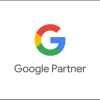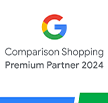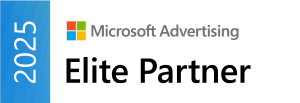On August 5th of last year, Google published information that Gallery Ads is now available in beta version in eleven languages, including Polish. Other languages include English, German, Japanese, French and Spanish[1]. However, not all users of Google Ads can take advantage of this solution immediately, as Google is enabling this option on individual advertising accounts progressively. Therefore, it is a good idea to sign in to the client panel and check if Gallery Ads is already available.
Gallery Ads – key facts
What do we know about the new type of advertising? Some important facts have already emerged during the conference:
- They are directed to mobile devices and will be displayed at the top of the SERP.
- The advertiser can place from 4 to 8 graphics on one advertisement.
- The text for each graphic can have a maximum of 70 characters.
- Notably, Google allows you to add three different headers, which may include CTA[2]. However, these headers will not change when moving the graphics[3].
- Ads will be charged in the CPC model, but only after the user clicks on the ad or scrolls to at least the third graphic[4].
Similarly to Discovery ads, Gallery Ads will be published in the form of a carousel to enable consumers to view graphic creations smoothly. It is estimated that such an advertising format may increase the number of interactions even by 25%[5]! For now, Gallery Ads do not assume the possibility of using video creations, you can only rely on graphics.
Gallery Ads – for who?
The range of companies that can use this advertising format is extremely wide, we are talking about both B2B and B2C entities. Basically, companies using visual content in their promotional activities will benefit from it. In the case of B2B companies, Gallery Ads can be used to present their results, interesting digital products and promising numbers that will impress the potential customer.
B2C companies, on the other hand, have a much greater scope for showing off their products (eCommerce, restaurants, car manufacturers, dealers, travel agencies) and provided services (hotels, workshops, SPAs, gyms, hairdressers, medical clinics, auto detailing companies) in a very attractive way. Another advantage of Gallery Ads is at stake here. By being able to present several products, services or experiences (or several aspects of one product/service) in one advertisement, you can achieve a truly convincing effect.
Gallery Ads – Facebook track?
A similar advertising format has been running for some time on Facebook and Instagram and has proven its worth on both platforms. The companies that use such ads have often noted a significant improvement in ROAS and a decrease in CPA costs. No wonder that Google also wants to offer a similar product. There is one more important aspect of why Gallery Ads are eagerly clicked.
People consume visual content much faster and more willingly. Since the human brain processes images 60,000 times faster than text[6], it is natural for Google and other Internet platforms to move from text to visual advertising. No wonder, that Google, especially on smartphones, where we need information immediately, is putting its trust in this direction. The wide range of usage of the new ads makes it possible for the great majority of Google Ads users to use them.
How to launch Gallery Ads?
It’ s time for the most important information for advertisers. As we mentioned earlier in the text, these ads will not necessarily be available in your account. To check this, log in to the Google Ads customer panel, go to the „Ads and Extensions” section, and then look for „Advertising from the ad gallery”.
If the gallery ads are already available in your account, when you select this option, an editor will appear in which you will add all the components of this ad, and these are:
- Final URL address
- Display path
- Three headers (maximum of 30 characters each)
- Carousel of images
After completing all the fields you can move on to the approval of the advertisement.
Gallery Ads are a natural complement to GDN. Clearly, Google prepares users and advertisers to use visual content. Who knows, maybe in a couple (dozen or so) years, text ads will be gone? Young people are already more willing to search for the information they need on YouTube, so we can conclude that the future is much more promising for visual advertising. Time will tell, in the meantime, it is certainly worthwhile to familiarize ourselves more closely with this advertising format and – at least for testing purposes – include it in promotional activities on Google.





